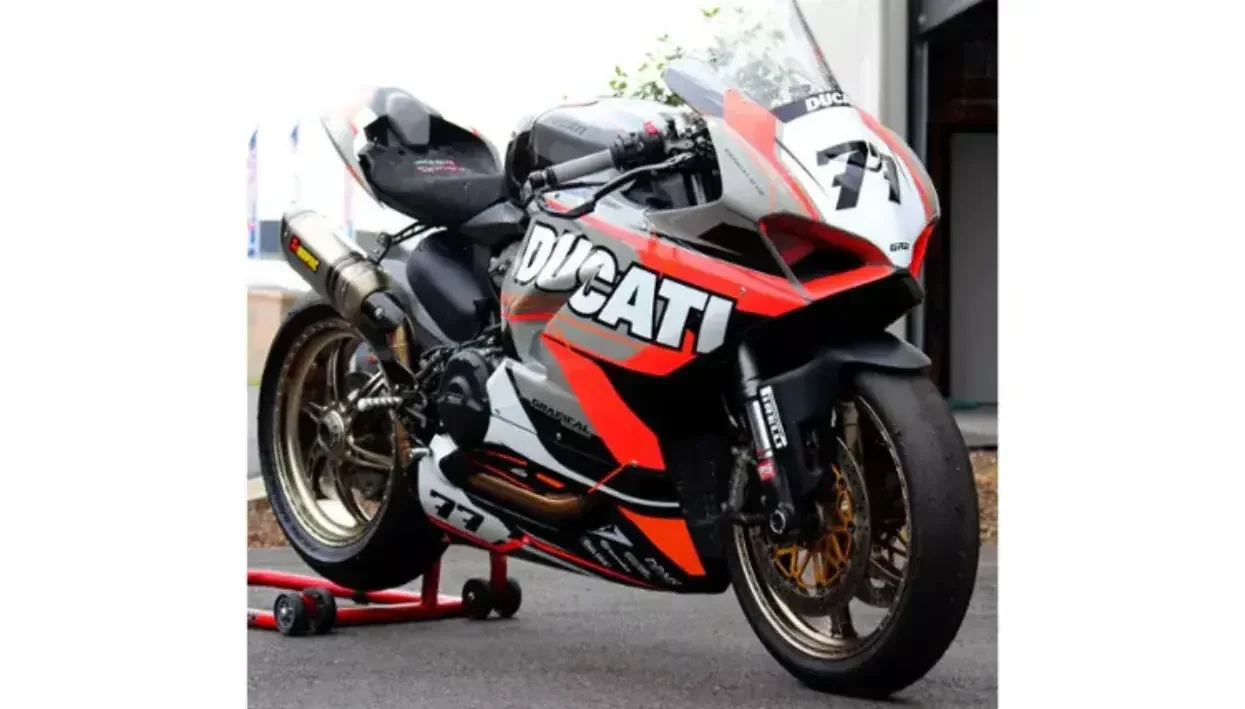
While rising demand for vehicle wrapping is good news for the industry, this is placing more pressure on companies to deliver quality work at a solid pace. Here, Rob Fletcher picks up some tips from several experts in this sector to help wrappers operate smoothly.
From one-off van wrap jobs for a local plumber or electrician, to large-scale projects that involve re-branding an entire fleet of vans, demand for vehicle wrapping has never been higher, with projects of all shapes and sizes falling in the laps of those active in this market.
Rising demand means printers, sign-makers and other business involved in wrapping now face the challenge of continuing to deliver quality vehicle wraps and graphics on each job, while not keeping the customer waiting too long.
We speak with two leading names in this sector – a supplier of wrapping materials and a wrapping company – for guidance on how a few, simple steps can help to ensure long-term success in what is an exciting market.
Prepare to succeed
First to advise is Metamark, which supplies wrappers around the world with materials. Paige Walton, trainer at the Metamark Academy, said the potential for application mistakes when wrapping is greatly reduced with experience and training.
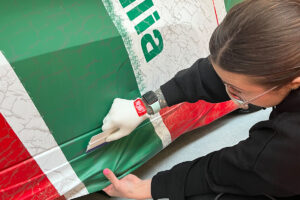
Metamark offers a wide range of wrapping materials to the market
“Poor surface preparation can be a factor, while excessive repositioning and manual handling can diminish material performance and basic mistakes with printing and laminating have an influence, too,” Walton said.
“Concepts of quality exist in wrapping that trace to care and acquired skills. Dealing with challenging areas is something that can be overcome with clumsy technique but learned skills avoid the pain of the confronting a failure later.
“Expecting a material that’s not qualified for wrapping to live up to the application’s considerable demands isn’t unknown. With enough heat and muscle, lots of adhesive films can be stretched and pummelled over complex surfaces. It’s never long though before the material recovers its state in repose and the adhesive simply gives up and the ‘wrap’ fails.”
So, how can you avoid these issues? Walton, and indeed Metamark, advocate meticulously surface preparation to remove obvious visual signs of dirt and debris, and then an almost forensic approach to removing contamination that cannot be seen.
“Thankfully, that is as easily done as told, and the company offers a whole range of products for the task – and the technical support needed to use them properly,” Walton said.
“Getting to quality is a matter of experience and hands-on involvement. Wrapping isn’t something that can be learned in theory without a corresponding input in practice. Seek qualified training. Work with the programme. Apply the learning. From that foundation, good wrappers become sought after experts.”
With this, Walton offers advice on how to go about selecting the most suitable and reliable materials for wrap jobs. She said while materials that are qualified for wrapping applications are made with that purpose in mind, wrappers, however expert they may be, are not going to succeed with a material not engineered for the purpose.
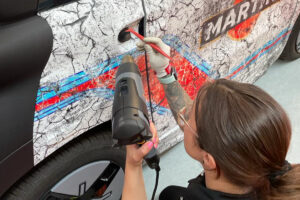
Metamark recommends wrappers look for reputation and a brand when selecting their materials
“Look for a reputation and a brand,” Walton said. “Metamark says its wrapping materials reflect the needs of the application and have been developed with the help of practical experts and not just a room full of chemists and material scientists.
“Work with something that works with you. A very aggressive film may offer impressive bonding credentials but be challenging to those on the learning curve. Metamark again says it offers films suitable for all levels of experience whether the need is for coloured or printable wrapping films.”
Pick your printer carefully
Next up is Jarno Provost, the founder of Grafical, which, based in Belgium, is a diversified company that counts vehicle wraps and graphics among its range of services. Focusing on wrapping, Provost said when it comes to selecting a printer, each vehicle wrap business has different priorities.
“Larger companies with high production demand often prioritise speed and colour accuracy, whilst smaller operations may require versatility across multiple media types,” Provost said. “At Grafical, we opted for latex/resin printers due to their superior efficiency, ecological benefits, and ability to deliver vibrant colours across a range of substrates.”
Grafical runs a Roland DG TrueVIS AP-640, which allows the company to print, laminate and install wraps of all shape and sizes. Provost noted that the printer’s wide colour gamut also ensures motorsport clients receive “striking, high-impact graphics”.“Choosing the right printing technology is another key factor. Investing in a printer with water-based inks, such as the Roland DG TrueVIS AP-640, reduces the time needed for degassing,” he said. “These prints can be laminated much quicker, significantly improving workflow efficiency. This not only speeds up production but also ensures a more stable adhesive bond, preventing premature lifting or failure.”
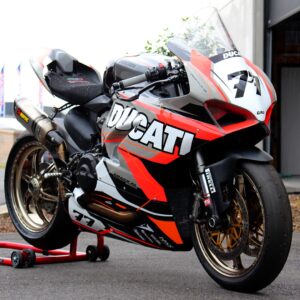
According to Grafical, printer choice plays a major role in the success of vehicle wrap jobs
While of course printer choice will have a major impact on the quality of the graphics and wraps produced, Provost said there are other steps wrappers should be taking to avoid making simple, yet troublesome and time-consuming, mistakes.
Focusing first on drying, Provost said for solvent-based prints, drying is not just about surface dryness, but more about allowing solvents to fully evaporate. He said: “This process, known as degassing, ensures that the adhesive remains unaffected by residual chemicals. If prints are laminated too soon, trapped solvents can compromise adhesion, leading to excessive stickiness during installation, difficulty in eliminating air bubbles, and ultimately, premature failure in deep recesses of the wrap.
“A safe rule of thumb is to allow at least 24 hours for degassing before lamination. However, this timeframe may vary depending on the printer and ink used. For example, the Roland DG TrueVis AP-640 requires a significantly shorter degassing time, making it a more efficient choice for fast-paced production environments.”
Provost leads on from this to say that to ensure flawless application and long-lasting results, wrappers should first allow sufficient degassing time. He said letting solvent prints dry for at least 24 hours before laminating is crucial, and prints should be kept loosely wound rather than tightly rolled to prevent solvent entrapment between layers.
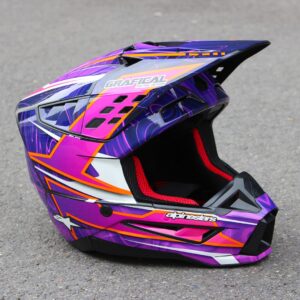
Vehicle wrapping can be extended to accessories such as motorcycle helmets
“Optimising printing and laminating conditions is equally important,” he said. “Maintaining a controlled environment with proper ventilation aids solvent evaporation, whilst using media profiles suited to the printer enhances ink adhesion and drying consistency.”
These are just some of the simple, yet effective, wrappers can take to avoid easily avoidable mistakes when producing vehicle wraps and graphics. Speaking with your suppliers and fully understanding the printing process will allow you to speed up production and improve the quality of work you supply to customers.
For more hints and tips on how to succeed with wrapping, consider dropping by the World Wrap Masters Finals, which take place from 8-9 May at the FESPA Global Print Expo 2025. Here, visitors will have the chance to see and learn from some of the world’s best wrappers. Register to visit here and use promo code FESJ501 before 8th April and only pay 50 euros for your entrance ticket.